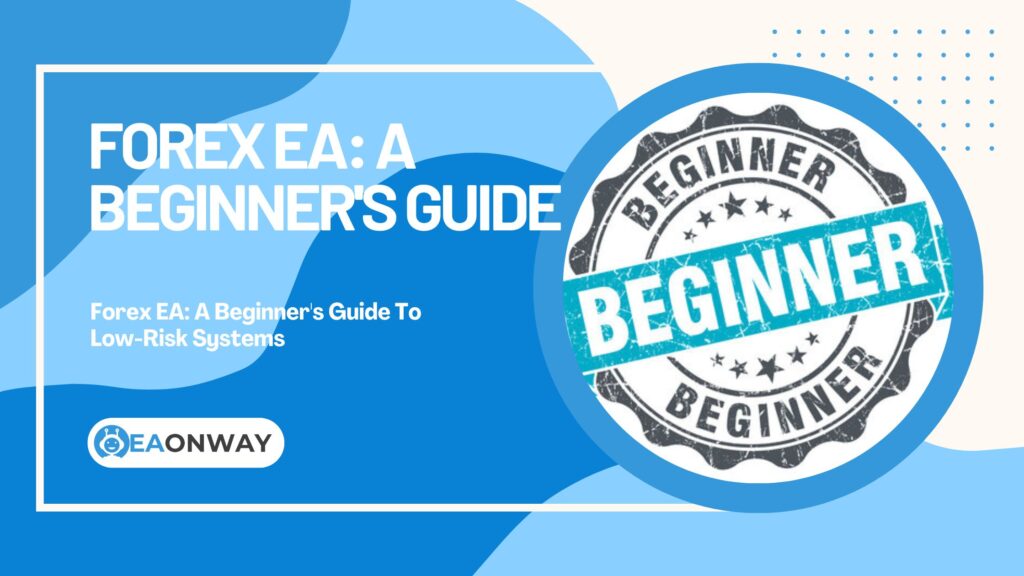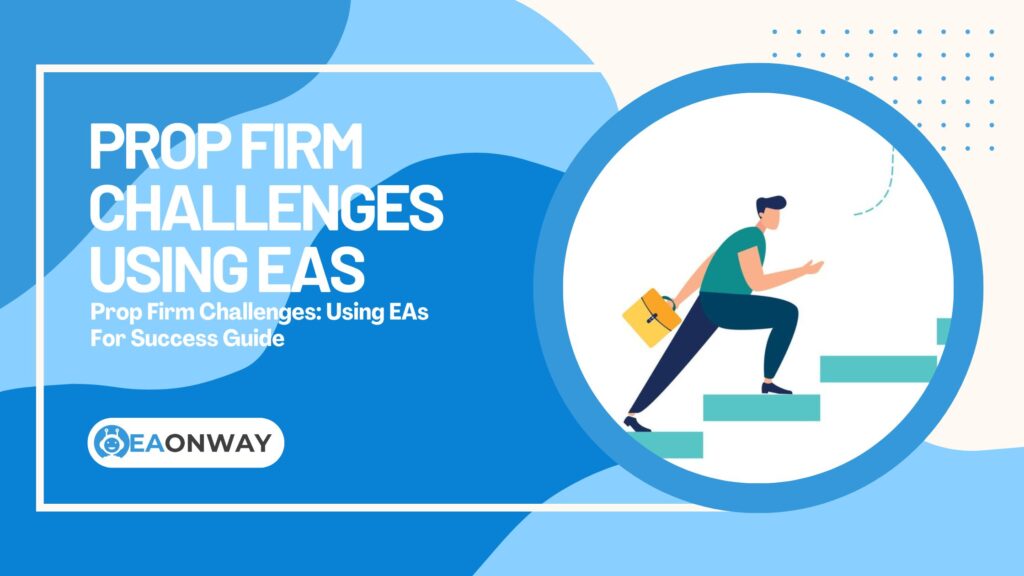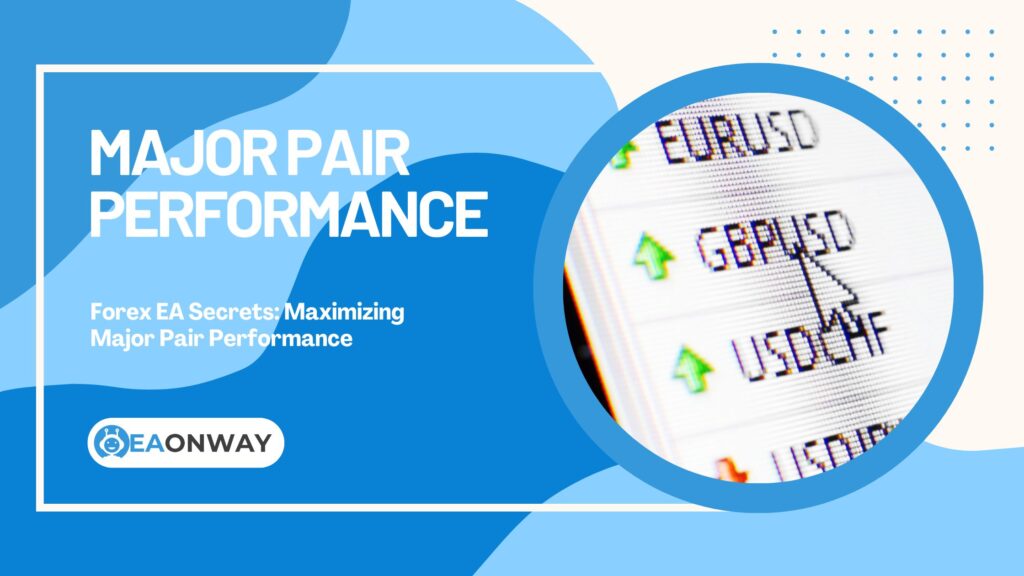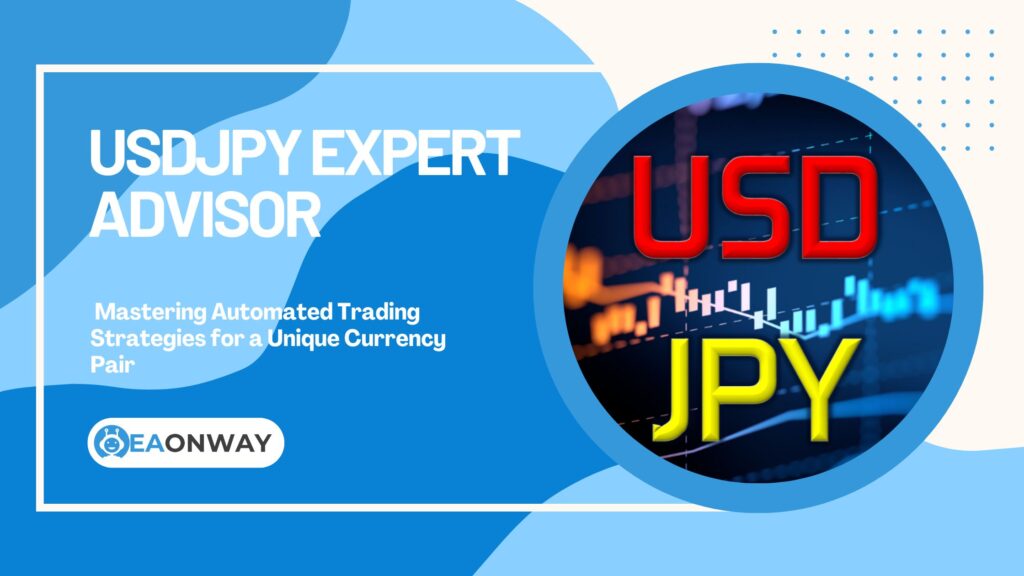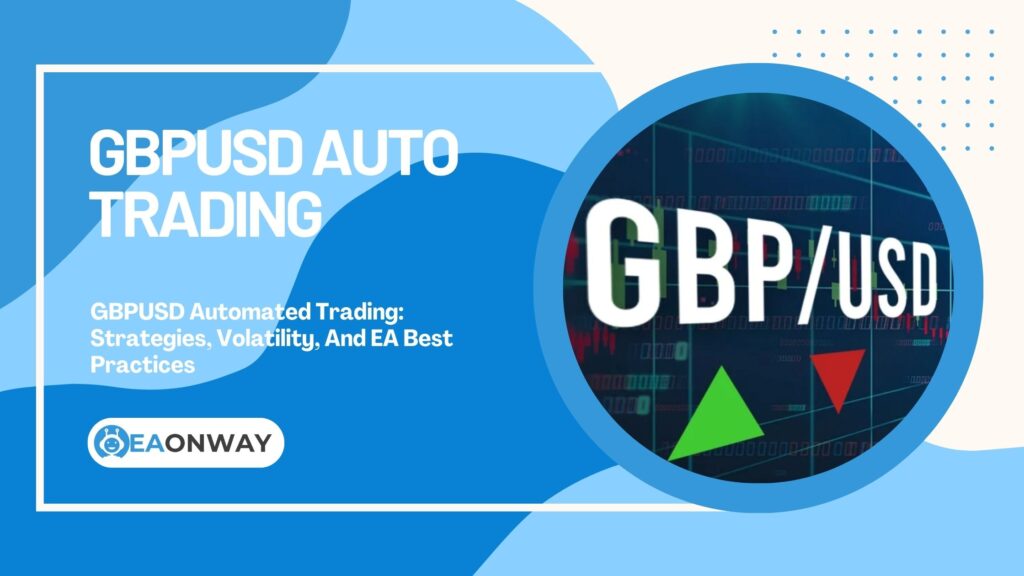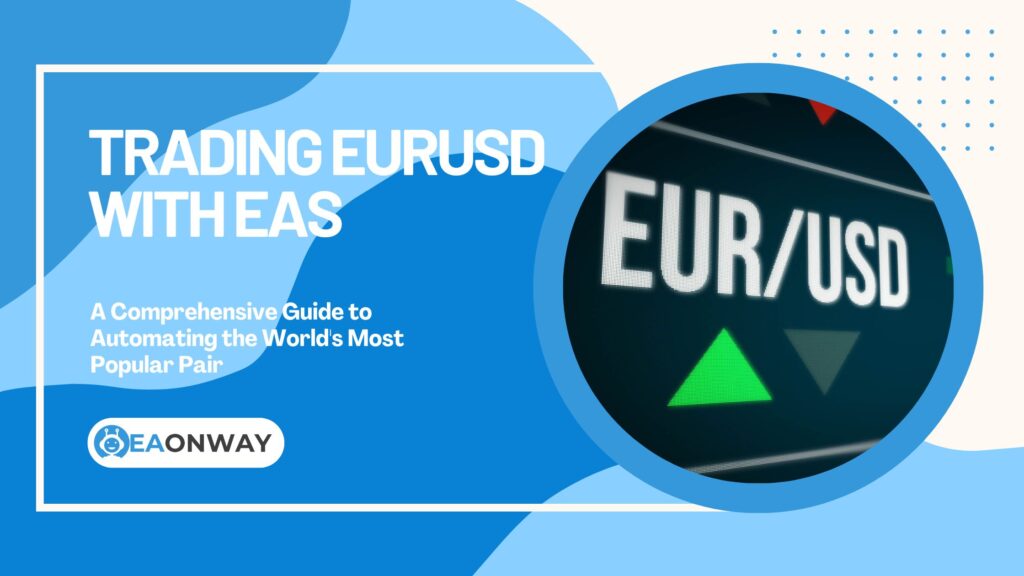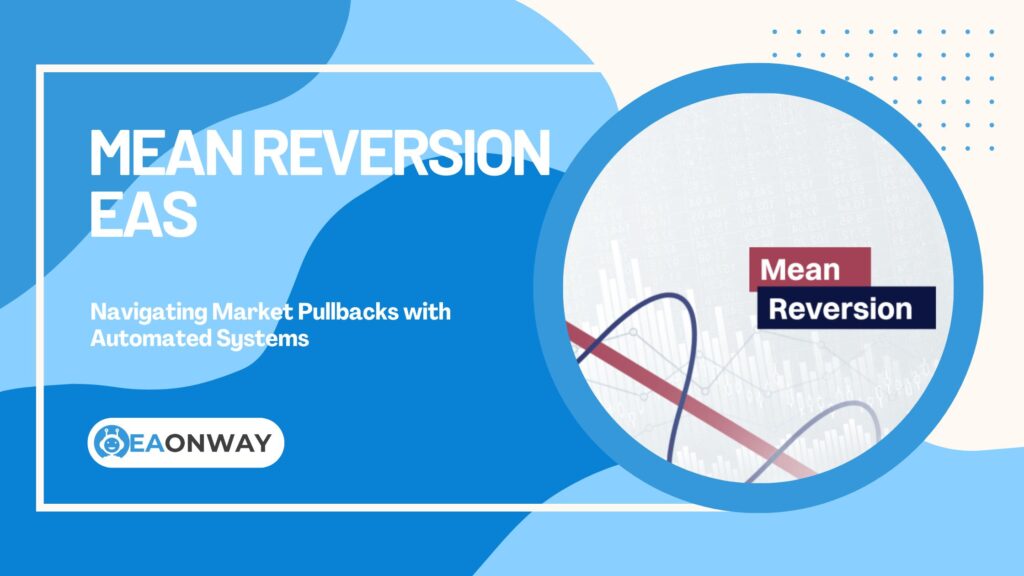Common EA Trading Strategies
Low Drawdown EAs: Preserving Capital In Automated Forex Trading
Low Drawdown EAs: Preserving Capital In Automated Forex Trading
Are you exploring automated Forex trading with Expert Advisors (EAs) and concerned about protecting your trading capital? The allure of hands-off trading is strong, yet the fear of significant losses, often represented by a high drawdown, can be a major hurdle. Understanding what a low drawdown EA is, and how such systems aim for capital preservation, is crucial before venturing into the world of algorithmic trading. This article delves into the critical concept of drawdown in Forex EAs, explores strategies for achieving lower drawdowns, and emphasizes the importance of managing risk to foster realistic expectations in your automated trading journey. We aim to equip you with the knowledge to navigate the complexities of Forex EAs, understand potential pitfalls, and appreciate the principles behind systems designed for capital preservation.
Key Takeaways
- Drawdown Defined: Drawdown measures the peak-to-trough decline in your trading account’s equity during a specific period, indicating the largest loss from a high point.
- Low Drawdown EAs Prioritize Capital: A low drawdown EA is designed to minimize these declines, focusing on protecting your initial investment and accumulated profits.
- Capital Preservation is Key: Protecting your trading capital is paramount for long-term participation and sustainable growth in the Forex market.
- Strategies Matter: Techniques like robust risk management, proper position sizing, dynamic stops, and thorough testing are vital for developing or selecting a low drawdown EA.
- High Drawdown Risks: Over-optimization, poor risk settings, unexpected market volatility, and flawed trading logic can lead to significant drawdowns.
- Realistic Expectations: No EA guarantees profits or zero drawdown. Understanding potential risks and worst-case scenarios is essential.
- Continuous Learning: The Forex market is dynamic; continuous monitoring, learning, and EA adjustment (if applicable) are necessary.
Understanding Drawdown In Forex Trading
Navigating the Forex market, especially with automated systems like Expert Advisors, requires a firm grasp of key performance metrics. Among the most critical is drawdown, a term that directly reflects the risk exposure and potential losses of a trading strategy.
What Is Drawdown In Forex?
Drawdown in Forex refers to the reduction in account equity from a peak value to a subsequent trough. Essentially, it measures the largest single loss or series of losses your trading account experiences before a new equity high is achieved. It’s a percentage or dollar amount representing this decline, offering a clear picture of downside risk. Understanding this is vital for any Forex robot low drawdown strategy.
For example, if your account reaches a high of $10,000 and then drops to $8,000 before rising again, the drawdown is $2,000, or 20%. This metric is a fundamental aspect of risk management in forex trading.
How Is Drawdown Calculated For Forex EAs?
Drawdown for Forex EAs is typically calculated by tracking the account equity over time. The most common calculation is for Maximum Drawdown:
Maximum Drawdown (%) = ((Peak Equity – Trough Equity) / Peak Equity) * 100
Where:
- Peak Equity is the highest point your account balance reached.
- Trough Equity is the lowest point your account balance fell to after reaching that peak, before a new peak was established.
Many trading platforms like MetaTrader 4 (MT4) and MetaTrader 5 (MT5) automatically calculate and display drawdown figures in their backtesting reports and performance analytics for an MT4 low drawdown EA or an MT5 low drawdown EA.
Why Is Understanding Drawdown Crucial For Forex Traders?
Understanding drawdown is crucial because it directly quantifies the risk inherent in a trading strategy or Forex EA. A high maximum drawdown forex figure suggests that the EA can experience significant losing streaks, potentially wiping out a substantial portion of trading capital. This insight helps traders:
- Assess their risk tolerance against the EA’s historical performance.
- Set realistic expectations about potential losses.
- Make informed decisions about capital allocation.
- Compare the risk profiles of different EAs.
A consistent Forex EA often exhibits manageable drawdown levels. According to Blueberry Markets, average maximum drawdowns for Forex EAs typically range between 15-40% depending on the strategy aggressiveness, with conservative EAs targeting under 20% maximum drawdown (Source: Blueberry Markets, “Drawdown in Forex Trading: Meaning & Risk Control”).
Differentiating Between Peak, Average, And Maximum Drawdown
While Maximum Drawdown is the most cited, other drawdown metrics provide further context:
- Peak Drawdown (or Absolute Drawdown): This refers to the largest drop from the initial deposit. If your initial deposit was $5,000 and your account never went below $4,500, even if it later grew to $10,000 and then dropped to $8,000, the absolute drawdown relative to the initial deposit is $500 (or 10%). However, this term is often used interchangeably with Maximum Drawdown in common parlance.
- Average Drawdown: This is the average of all drawdown periods experienced by the EA. It gives an idea of the typical size of losing streaks, though it can be less informative than Maximum Drawdown for worst-case scenario planning.
- Maximum Drawdown (Relative Drawdown): As defined earlier, this is the largest percentage drop from any equity peak to a subsequent low. This is the most critical figure for assessing the risk of an EA, as it shows the worst historical loss streak relative to a high point in equity. When traders refer to “drawdown,” they usually mean Maximum Drawdown. The U.S. Commodity Futures Trading Commission (CFTC) often requires disclosure of risk, and understanding drawdown is part of that (Source: CFTC, Virtual Currency Resource Page).
Understanding these distinctions helps in a more nuanced assessment of an EA’s risk profile and is essential for algorithmic trading capital preservation.
The Significance Of Low Drawdown Expert Advisors (EAs)
In the pursuit of automated Forex trading success, the concept of a “low drawdown EA” stands out as a beacon for traders focused on longevity and stability. These EAs are specifically engineered or selected for their ability to minimize losses during adverse market movements, making capital preservation a central tenet of their operational strategy.
What Defines A Low Drawdown Expert Advisor?
A low drawdown Expert Advisor is an automated trading system that historically exhibits minimal declines from its peak equity levels. While there’s no universal percentage that defines “low,” it generally implies a Maximum Drawdown figure that is comfortably within an investor’s risk tolerance, often single-digit percentages or low double-digits for conservative approaches. The emphasis is on protecting capital, even if it means potentially lower, but more consistent, returns. Such an EA prioritizes surviving market fluctuations over aggressive profit-chasing.
Why Is Capital Preservation Paramount In Automated Trading?
Capital preservation is paramount in automated trading, and indeed all forms of investment, because your capital is your primary tool. Without it, you cannot trade or invest. Significant losses can:
- Psychologically impact you: Large drawdowns can lead to fear, stress, and poor decision-making.
- Reduce compounding potential: Recovering from a large loss requires a disproportionately larger gain. For instance, a 50% loss requires a 100% gain just to break even.
- Force you out of the market: If drawdown exceeds your risk capital, you may have to stop trading altogether.
A focus on capital preservation forex strategies is fundamental for long-term market participation. Financial authorities like the Financial Conduct Authority (FCA) in the UK often emphasize the risks involved in Forex trading, implicitly underscoring the need for capital protection. As Investopedia notes in their analysis of drawdowns, the psychological impact of significant equity declines often leads traders to abandon otherwise viable strategies prematurely (Source: Investopedia, “Drawdown: What It Is, Risks, and Examples”).
How Can Low Drawdown EAs Contribute To Consistent Trading?
Low drawdown EAs can contribute to consistent trading by fostering a more stable equity curve. By minimizing the depth of losses:
- They reduce the psychological toll of trading, allowing traders to stick to their plans without emotional interference.
- They require smaller percentage gains to recover from losses, making the path to new equity highs smoother.
- They build confidence in the trading system, which is crucial for long-term adherence.
A “safe Forex EA” is often synonymous with one that demonstrates consistent performance with controlled drawdown. While no EA is truly “safe” due to inherent market risks, those with low drawdown characteristics are generally perceived as less aggressive.
What Are Realistic Expectations For Low Drawdown EA Performance?
Realistic expectations for a low drawdown EA involve understanding that lower risk often correlates with more modest profit targets. It’s unlikely that an EA prioritizing minimal drawdown will also produce exceptionally high monthly returns consistently. Key expectations should include:
- Modest but steady gains: Focus on sustainable growth rather than rapid enrichment.
- Periods of stagnation or small losses: No EA wins all the time; drawdowns, albeit small, will occur.
- Emphasis on risk-adjusted returns: Metrics like the Sortino Ratio Forex EA (which differentiates harmful volatility from overall volatility) become more relevant than just raw profit figures.
- Understanding that past performance is not indicative of future results: Even a well-tested low drawdown EA can encounter unforeseen market conditions.
Setting achievable goals based on these principles is crucial for a satisfactory experience with automated Forex trading.
Common Causes Of High Drawdown In Forex EAs
While the goal is often to find or develop a low drawdown EA, many automated trading systems can experience significant and detrimental drawdowns. Understanding the common culprits behind high drawdown is essential for both EA developers and users to mitigate these risks.
How Does Over-Optimization Lead To High Drawdown?
Over-optimization, or curve-fitting, occurs when an EA’s parameters are excessively tuned to perform exceptionally well on historical data. This often results in a system that is too specific to past market conditions and lacks robustness to adapt to new, unseen data. When live market dynamics shift, an over-optimized EA can perform poorly, leading to unexpectedly high drawdowns. This is a frequent pitfall in EA optimization for low drawdown if not done carefully with out-of-sample testing.
A 2024 analysis of trading system validation methods found that forward testing identified 47% more performance issues than backtesting alone, with particular emphasis on drawdown discrepancies between backtest and live performance (Source: Investopedia, “Drawdown: What It Is, Risks, and Examples”).
Can Poor Risk Management Settings Inflate Drawdown?
Absolutely. Poor risk management settings are a primary driver of high drawdown. This can include:
- Excessive Lot Sizes: Trading with position sizes too large relative to account capital magnifies both potential profits and losses.
- No Stop-Loss or Inappropriately Wide Stop-Loss Orders: Failing to define a maximum acceptable loss per trade can lead to catastrophic losses on a single position.
- High Leverage Mismanagement: While leverage can amplify gains, it equally amplifies losses, and using too much without a corresponding risk control strategy can quickly deplete an account.
Effective risk management Forex trading principles are non-negotiable.
What Role Does Market Volatility Play In EA Drawdown?
Market volatility, characterized by rapid and significant price fluctuations, can heavily impact EA drawdown. EAs designed for trending markets might suffer during choppy, range-bound conditions, while range-trading EAs can be caught out by strong breakouts. Sudden, unexpected news events or “black swan” events can cause extreme volatility, leading to:
- Slippage: Orders filled at prices worse than requested.
- Widened Spreads: Increased transaction costs.
- Stop-loss orders being triggered prematurely or gapped through.
A robust EA should have mechanisms or be used in a way that accounts for varying levels of market volatility.
Are Flawed Trading Logic Or Indicators A Common Culprit?
Yes, flawed trading logic or the misapplication of technical indicators can certainly lead to high drawdowns. If the core strategy of the EA is unsound:
- It may generate frequent false signals.
- It might fail to identify changing market structures.
- It could be based on indicators that lag too much or are prone to “repainting.”
The underlying principles of building low drawdown trading systems must be sound from the outset. Thorough backtesting and forward testing are crucial to identify such flaws.
How Can Ignoring Changing Market Conditions Affect Drawdown?
Forex markets are not static; they evolve. Regimes shift between trending, ranging, high volatility, and low volatility. An EA developed and optimized for one specific market condition may struggle significantly when that condition changes if it’s not adaptive or if the user doesn’t recognize the shift. For example, a trend-following EA will likely experience increased drawdown during prolonged sideways markets. This highlights the need for ongoing performance monitoring and understanding the EA’s operational sweet spot. Automated trading capital preservation relies on adapting to or being robust against these changes.
Core Principles For Building And Selecting Low Drawdown Forex EAs
Creating or choosing a Forex Expert Advisor that prioritizes capital preservation through low drawdown involves adhering to fundamental principles of system development and evaluation. These principles guide the journey towards more stable and potentially sustainable automated trading.
What Are The Foundational Principles Of Building Low Drawdown Trading Systems?
Building low drawdown trading systems revolves around a defense-first mindset. Key principles include:
- Robust Risk Management: Implementing strict risk controls per trade (e.g., fixed fractional position sizing, hard stop-losses).
- Statistical Edge: The trading logic must have a demonstrable positive expectancy over a large sample of trades.
- Simplicity: Overly complex systems are often harder to understand, test, and are more prone to curve-fitting.
- Adaptability (or Awareness of Limitations): The system should either have mechanisms to adapt to different market conditions or its limitations in specific environments must be clearly understood.
- Realistic Profit Targets: Aiming for modest, achievable gains often aligns better with low drawdown objectives than chasing exorbitant returns.
How Important Is Robust Backtesting And Forward Testing?
Robust backtesting and forward testing are critically important.
- Backtesting Low Drawdown EA: This involves testing the EA on historical price data to see how it would have performed. It helps identify potential flaws, assess drawdown characteristics (like maximum drawdown Forex), and optimize parameters. However, it’s crucial to avoid over-optimization. Using high-quality data and testing across various market conditions is vital.
- Forward Testing (Walk-Forward Analysis or Paper Trading): This involves testing the EA on unseen historical data or in a live simulated environment without risking real capital. Forward testing provides a more realistic assessment of how the EA might perform in real-time conditions. It is a key step in validating backtest results.
Why Should You Prioritize Risk-Reward Ratios In EA Strategy?
Prioritizing favorable risk-reward ratios is a cornerstone of prudent trading and contributes to managing drawdown. A risk-reward ratio compares the potential profit of a trade to its potential loss. For example, aiming for a 2:1 ratio means you’re targeting a profit twice the size of your risked capital.
- Impact on Drawdown: Even with a win rate below 50%, a strategy with a sufficiently high risk-reward ratio can be profitable and can help recover from losses more quickly, potentially reducing the depth and duration of drawdowns.
- Psychological Benefits: Knowing that your potential gains outweigh potential losses on individual trades can improve trading discipline.
What Is The Role Of Statistical Validity In EA Development?
Statistical validity ensures that an EA’s perceived performance is not due to random chance or curve-fitting. This involves:
- Sufficient Trade Sample Size: Performance metrics derived from a small number of trades are unreliable. Hundreds, if not thousands, of trades are often needed for robust statistical significance.
- Out-of-Sample Testing: Confirming that the EA performs well on data it wasn’t optimized on.
- Monte Carlo Simulations: These can help assess the probability of various outcomes, including worst-case drawdown scenarios, by running the EA’s strategy through thousands of randomized simulations of market data.
A focus on statistical validity helps build confidence that the EA has a genuine edge and isn’t just a product of hindsight bias. This is central to developing a consistent Forex EA.
Strategies For Achieving And Maintaining Low Drawdown With Forex EAs
Achieving and maintaining a low drawdown with Forex Expert Advisors isn’t just about finding the “right” EA; it’s also about implementing sound strategies in its deployment and management. These strategies focus on proactive risk control and adapting to the market’s dynamic nature.
How Can Effective Position Sizing Strategies Minimize Drawdown?
Effective position sizing strategies are crucial for minimizing drawdown. Instead of using a fixed lot size for every trade, consider:
- Fixed Fractional Position Sizing: Risking a small, fixed percentage of account equity per trade (e.g., 1% or 2%). As equity grows, lot sizes increase; as it shrinks, lot sizes decrease, naturally curtailing risk during losing streaks. This is a cornerstone of risk management Forex trading.
- Volatility-Adjusted Position Sizing: Adjusting position size based on market volatility. Higher volatility might warrant smaller positions to maintain a consistent risk exposure in monetary terms.
Proper position sizing ensures that no single trade or series of trades can inflict catastrophic damage on the trading capital.
What Is The Impact Of Dynamic Stop Loss And Take Profit Levels?
Dynamic stop loss and take profit levels, often managed by a dynamic stop loss EA feature, can significantly impact drawdown management:
- Trailing Stops: These automatically move the stop-loss level in a favorable direction as a trade becomes profitable, locking in gains and protecting against reversals.
- Volatility-Based Stops: Setting stop-loss (and sometimes take-profit) levels based on current market volatility (e.g., using Average True Range – ATR). Wider stops might be used in volatile markets and tighter stops in calmer conditions, adapting to risk.
- Break-Even Stops: Moving the stop loss to the entry price once a trade has moved a certain distance in profit.
These adaptive measures aim to cut losses short and let profits run, which can contribute to a smoother equity curve and lower drawdown.
Can Hedging Strategies Be Used To Control Drawdown In EAs?
A hedging strategy EA attempts to control drawdown by opening an opposing position to an existing one. For instance, if an EA has a long EUR/USD position and the market turns against it, a hedging feature might open a short EUR/USD position.
- Potential Benefit: It can temporarily cap losses on the initial trade without closing it, hoping the market will reverse.
- Significant Risks and Complexities:
- Does not eliminate risk: It transforms a directional risk into a spread risk or a time-decay risk (if swaps are unfavorable). The net loss is locked in unless one leg is closed strategically.
- Increased Costs: Holding two positions incurs double the spread costs and potentially double the swap fees.
- Complexity: Managing hedged positions effectively requires a sophisticated strategy for exiting one or both legs. Many retail traders find hedging more complex than initially perceived.
- Regulatory Restrictions: Hedging (opening simultaneous long and short positions on the same pair) is not permitted by all brokers or in all regulatory jurisdictions (e.g., NFA rules in the US).
While some advanced EAs might employ complex hedging algorithms, for most users, simpler risk management like stop-losses is more transparent and often more effective for drawdown control.
How Does Forex Portfolio Diversification With Multiple EAs Help?
Forex portfolio diversification by using multiple EAs operating on different strategies, currency pairs, or timeframes can help manage overall account drawdown. The principle is that if the EAs are not highly correlated:
- A drawdown in one EA might be offset by gains in another.
- The overall portfolio equity curve can be smoother than that of any single EA.
This requires careful selection of EAs with low correlation and ongoing monitoring of their combined performance. It’s a sophisticated approach to algorithmic trading capital preservation.
Why Is Continuous Monitoring And Adjustment Necessary?
The Forex market is dynamic, and an EA’s performance can change over time. Continuous monitoring is essential to:
- Detect performance degradation: Identify if an EA is no longer performing as expected.
- Spot changing market conditions: Recognize if the market environment has shifted away from the EA’s optimal operating conditions.
- Manage risk: Ensure the EA’s risk parameters remain appropriate for your current capital and risk appetite.
Adjustment might involve tweaking EA settings (if permissible and understood), re-optimizing (cautiously, to avoid over-optimization), or even ceasing to use an EA if it consistently underperforms or exceeds acceptable drawdown control strategies.
Understanding And Using The Sortino Ratio For EA Evaluation
The Sortino Ratio is a variation of the Sharpe Ratio that differentiates harmful volatility from total overall volatility by using the asset’s standard deviation of negative portfolio returns—downside deviation—instead of the total standard deviation of portfolio returns. A higher Sortino Ratio is preferable as it indicates a better risk-adjusted return focusing on downside risk.
- Relevance for Low Drawdown EAs: For EAs focused on capital preservation, the Sortino Ratio Forex EA metric can be more telling than the Sharpe Ratio because it specifically penalizes downside volatility, which directly relates to drawdown. It helps identify EAs that achieve returns with less “bad” volatility.
What Are Effective Drawdown Control Strategies?
Effective drawdown control strategies are multi-faceted and integral to any safe Forex EA approach:
- Pre-defined Maximum Drawdown Limit: Set an overall account drawdown level (e.g., 20%) at which you will pause all trading and re-evaluate your entire strategy or EA portfolio.
- EA-Specific Drawdown Limits: Monitor the drawdown of individual EAs. If a specific EA hits a pre-set drawdown threshold, consider reducing its allocation or pausing it.
- Strict Per-Trade Risk Limits: As discussed, ensure no single trade can cause significant damage.
- Regular Performance Reviews: Don’t “set and forget.” Review EA performance weekly or monthly against your expectations and risk limits.
- Awareness of Worst Case Drawdown: Mentally and financially prepare for the possibility of hitting the historical worst-case drawdown, or even exceeding it, as markets can always present new extremes.
By actively employing these strategies, traders can take a more proactive stance in managing the inherent risks of automated Forex trading and strive for better capital preservation.
Evaluating Forex EAs For Low Drawdown Potential
Selecting a Forex Expert Advisor with genuine low drawdown potential requires more than just looking at a headline number. A thorough evaluation process involves scrutinizing various metrics, understanding the context of performance data, and employing practical testing methods.
What Key Metrics Beyond Drawdown Should Be Assessed?
While Maximum Drawdown is critical, other metrics provide a fuller picture of an EA’s risk and reward profile:
- Profit Factor: Gross profit divided by gross loss. A value greater than 1 indicates profitability; higher is generally better, but extremely high values might suggest curve-fitting.
- Sharpe Ratio: Measures risk-adjusted return relative to total volatility. Higher is better.
- Sortino Ratio: As previously discussed, measures risk-adjusted return relative to downside volatility. Particularly relevant for low drawdown EAs.
- Average Win vs. Average Loss: Ideally, average wins should be larger than average losses, especially if the win rate is not exceptionally high.
- Trade Frequency and Duration: Understand how often the EA trades and how long trades are typically held. This impacts consistency and exposure.
- Recovery Factor: Net profit divided by maximum drawdown. It shows how efficiently an EA recovers from its drawdowns.
How Can You Scrutinize Vendor Claims And Backtest Results?
Scrutinizing vendor claims and backtest results for any Forex robot low drawdown is essential:
- Source of Backtest Data: Was it high-quality, tick-by-tick data? Poor data quality can lead to misleading results.
- Modeling Quality: For MT4, a modeling quality of 99.9% is ideal. Lower quality can render results unreliable.
- Spread and Slippage Assumptions: Were realistic spreads and slippage modeled in the backtest? Fixed, narrow spreads in testing can inflate performance.
- Test Period: Does the backtest cover various market conditions (trending, ranging, high/low volatility) over several years?
- Out-of-Sample Data: Did the vendor test on data that wasn’t used for optimization? Look for walk-forward optimization results.
- Transparency: Are the trading logic and risk management rules clearly explained or shrouded in secrecy? While proprietary algorithms are common, basic risk parameters should be clear.
- Third-Party Verified Results: Myfxbook or FXBlue links to live trading accounts provide more credibility than self-reported results, though even these require careful examination.
What Is The Importance Of Demo Testing Before Live Trading?
Demo testing an EA on a broker’s platform using virtual funds is a crucial step before committing real capital. It allows you to:
- Verify Functionality: Ensure the EA installs and operates correctly on your chosen broker’s platform.
- Observe Real-Time Performance: See how the EA behaves with live price feeds, actual spreads, and execution speeds, which can differ from backtesting.
- Assess Broker Compatibility: Some EAs may perform differently with various brokers due to execution, spread, or slippage variations.
- Build Familiarity: Get comfortable with the EA’s operation and monitoring requirements without financial risk.
A sufficiently long demo test (weeks or even months) can reveal performance aspects not evident in backtests, crucial for EA optimization for low drawdown.
Understanding The Worst-Case Drawdown Scenarios
It’s vital to understand and prepare for worst-case drawdown scenarios. Historical maximum drawdown is just that – historical. Future market conditions can always lead to new, larger drawdowns. Consider:
- Stress Testing: If possible, analyze how the EA might perform under extreme, hypothetical market shocks.
- Statistical Projections: While not definitive, some statistical models can estimate potential future drawdown ranges, though these are highly theoretical.
- Financial Preparedness: Never allocate capital to an EA that you cannot afford to lose. Ensure that even if the worst-case historical drawdown were to be repeated (or even exceeded by a margin), it would not financially cripple you.
This realistic perspective is key to managing expectations and fostering responsible automated trading.
The Psychological Aspect Of Dealing With Drawdowns
Even with a well-chosen low drawdown EA, periods of declining equity are inevitable. How a trader psychologically copes with these drawdowns is as critical to long-term success as the EA’s strategy itself. Emotional discipline and a clear plan are paramount.
How Does Drawdown Impact Trader Psychology?
Drawdowns, even small ones, can significantly impact trader psychology, leading to:
- Fear and Anxiety: Watching account equity decrease can evoke fear of further losses, leading to anxiety about the EA’s viability.
- Doubt and Second-Guessing: During a drawdown, it’s natural to question the EA’s strategy, even if it has a solid long-term track record.
- Impatience: Traders may become impatient for the EA to recover, leading to a temptation to interfere.
- Revenge Trading Tendencies (if manually intervening): Trying to “make back” losses quickly by increasing risk or overriding the EA, which often exacerbates the problem.
Recognizing these potential emotional responses is the first step in managing them.
Why Is Sticking To A Trading Plan Crucial During Drawdowns?
Sticking to a pre-defined trading plan is crucial during drawdowns because:
- It Provides Objectivity: Your plan, developed during a rational state of mind, outlines acceptable drawdown levels and actions to take.
- It Prevents Emotional Decisions: When emotions run high, the plan serves as an anchor, guiding decisions based on logic rather than fear or greed.
- It Maintains Consistency: Deviating from the plan based on short-term performance (like a drawdown) undermines the statistical edge the EA strategy might have over the long term.
Your plan should specify your maximum tolerable drawdown for the EA and for your overall account.
When Should You Consider Pausing Or Re-evaluating An EA?
Deciding when to pause or re-evaluate an EA during a drawdown should be based on objective criteria set before the drawdown occurs:
- Exceeding Pre-defined Drawdown Limits: If the EA surpasses its historical maximum drawdown by a significant margin, or hits a personal “kill switch” drawdown level you’ve set, it’s time to pause and investigate.
- Statistical Anomaly: If the losing streak is statistically highly improbable based on its historical performance (e.g., 10 consecutive losses when the historical average is 3).
- Change in Market Regime: If you identify a fundamental shift in market conditions that you know the EA is not designed for.
- Persistent Underperformance: If the EA consistently fails to meet its expected performance metrics over an extended period (not just a brief drawdown).
A disciplined approach, rather than a panicked reaction, is key. Any evaluation should be thorough, considering whether the issue is with the EA, the market, or perhaps unrealistic initial expectations.
Final Thoughts
The quest for a low drawdown EA is, at its core, a quest for sustainable and less stressful automated Forex trading. It emphasizes the critical importance of capital preservation – the bedrock upon which any long-term trading success is built. While no Expert Advisor can promise zero risk or guaranteed profits, understanding drawdown, its causes, and the strategies to manage it empowers you to make more informed decisions.
Remember that thorough research, diligent backtesting and forward testing, robust risk management Forex trading practices, and realistic expectations are your best allies. The allure of “set and forget” can be strong, but continuous monitoring and an awareness of the ever-changing market landscape are essential. Focus on understanding the principles behind an EA’s strategy and its risk profile, particularly its approach to drawdown control strategies and worst-case drawdown scenarios. By prioritizing knowledge and prudent risk management, you can navigate the complexities of automated trading with greater confidence and a clearer path towards your financial objectives.
Important Risk Warning
The content provided in this article is for educational and informational purposes only. It does not constitute financial or investment advice, nor is it an offer or solicitation to buy or sell any financial instrument. EaOnWay.com does not sell Expert Advisors or any trading software.
Forex trading, including trading with Expert Advisors (EAs) or automated systems, involves a very high level of risk and is not suitable for all investors. The leverage available in Forex trading can work against you as well as for you. Before deciding to trade Forex or use any automated system, you should carefully consider your investment objectives, level of experience, and risk appetite. There is a possibility that you could sustain a loss of some or all of your initial investment and therefore you should not invest money that you cannot afford to lose. You should be aware of all the risks associated with Forex trading and seek advice from an independent financial advisor if you have any doubts.
Past performance of any trading system or methodology is not indicative of future results. No representation is being made that any account will or is likely to achieve profits or losses similar to those discussed. All opinions, news, research, analyses, prices, or other information contained in this article are provided as general market commentary and do not constitute investment advice. EaOnWay.com will not accept liability for any loss or damage, including without limitation to, any loss of profit, which may arise directly or indirectly from use of or reliance on such information.
-
Forex EA: A Beginner’s Guide To Low-Risk Systems
-
No DLL EA: Security, Portability, And Trust Benefits in Forex Trading
-
The Advantage of Forex EAs with Source Code: Unlocking Customization, Transparency, and Learning
-
Prop Firm Challenges: Using EAs For Success Guide
-
Verified EA Performance: Track Records And Audits Explained
-
Forex EA Secrets: Maximizing Major Pair Performance
-
Automated Index Trading: Unlocking Strategies With Expert Advisors
-
Gold Trading EAs Uncovered: Automating Your XAUUSD Strategy
-
USDJPY Expert Advisor: Mastering Automated Trading Strategies for a Unique Currency Pair
-
GBPUSD Automated Trading: Strategies, Volatility, And EA Best Practices
-
Trading EURUSD with Expert Advisors: A Comprehensive Guide to Automating the World’s Most Popular Pair
-
Mean Reversion EAs: Navigating Market Pullbacks with Automated Systems

